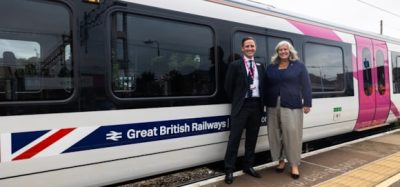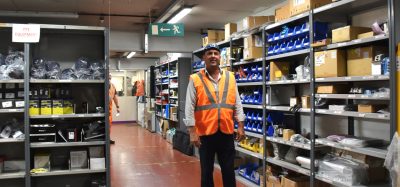Transforming trackside electrical fault-finding with innovative cloud-hosted solutions
Posted: 7 July 2020 | Edward Davies | No comments yet
In an interview for Global Railway Review, Managing Director, Edward Davies from Viper Innovations, explains how their cloud-hosted CableGuardian solution will help rail infrastructure managers revolutionise their trackside cable monitoring and fault-finding activities, and how the UK’s Network Rail has given the solution their internationally recognised product approval.
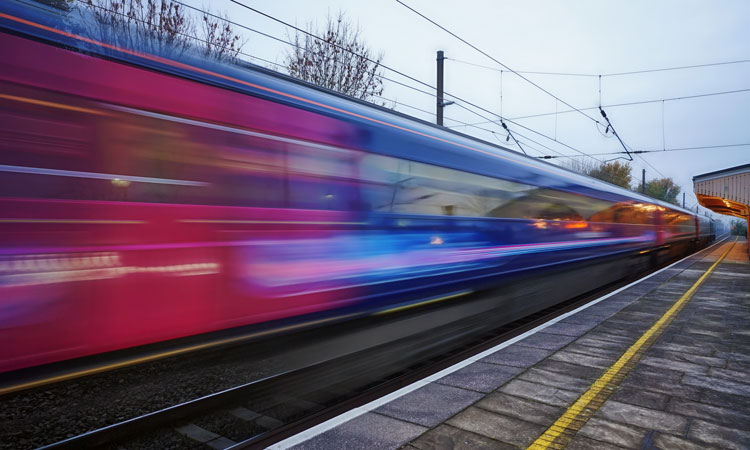

How can Viper Innovations’ experience and knowledge of other industries be applied to the rail sector?
We are a UK business currently better known for success in revolutionising subsea cable monitoring technology in the oil and gas sector. We now have our sights firmly set on delivering the benefits of our knowledge and expertise to the rail industry. This transfer of knowledge is not as unusual a fit as you may originally suppose, when you consider that power system electrical components, whether submerged thousands of metres underwater or exposed to the elements trackside, both must operate safely in extremely harsh environments. I think the issues the oil sector and rail operators face are remarkably similar – safety is both their primary concern, whilst downtime incurred from electrical faults has the potential to cause major disruption, inconvenience and significant financial repercussions.
Would you agree that fault finding has always been a challenge for the rail sector?
Signalling is such a crucial component of the overall railway infrastructure, so investment in new ways to monitor and improve signalling will pay immediate dividends in reducing passenger disruption.
Yes, finding exactly where faults have occurred when there is an electrical failure has never been a simple task for the rail industry. Fault finding in the rail sector is still traditionally conducted manually, quite literally relying on rail engineers to walk along the track to find cable issues; which is not only a time consuming and costly method, but most importantly relying on ‘boots on ballast’ as the solution carries the inherent safety risks associated with personnel working trackside, often in high stress situations.
Signalling is such a crucial component of the overall railway infrastructure, so investment in new ways to monitor and improve signalling will pay immediate dividends in reducing passenger disruption. According to statistics from Network Rail, 21 per cent of all train delays over a 12-month period are related to cable faults, signalling system and power faults. These figures give a clear indication why the need to identify where the faults are located and prevent them before they occur, must be high on every railway operator’s agenda.
So, what are the core benefits of CableGuardian and how accurate is it?
CableGuardian is a sophisticated cloud-hosted cable monitoring and fault-finding system designed to help prevent service affecting failures by enabling asset maintainers to predict faults before they occur. The system delivers precise condition trending down to individual cable level and can accurately pinpoint fault locations and instances of theft and vandalism. The technology operates continuously on live power networks providing critical cable insulation and conductor integrity information in real time, eliminating the need to power down the system for intrusive periodic testing and enabling a move to proactive, risk-based, maintenance.
CableGuardian is a sophisticated cloud-hosted cable monitoring and fault-finding system designed to help prevent service affecting failures by enabling asset maintainers to predict faults before they occur.
CableGuardian monitors both cable insulation and conductor condition within a power distribution network, by dispersing multiple independent measurement units within principal and auxiliary power supply points and location cases. It provides detailed monitoring down to individual cable sections, breaking away from the traditional limitations of insulation monitoring devices that offer only a single Insulation Resistance measurement for the complete circuit and is the only system that offers Tier 3, Tier 2 and Tier 1 adherence to the Network Rail Insulation Monitoring Device standard NR/L2/SIGELP/27725.
The system provides condition trends, graphically highlighting faults of Insulation Resistance, Insulation Capacitance and conductor to conductor faults (short and open circuits) via a secure web browser-based analytics package, eradicating the need for unplanned trackside fault-finding missions.
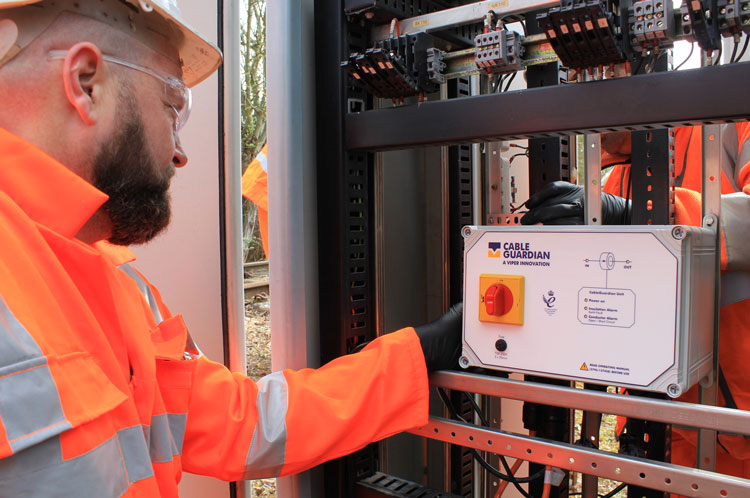

So, the goal is to ensure manual cable testing will become a thing of past?
CableGuardian provides a proactive and smart online alternative to manual cable testing. The beauty of the system is that it can be very quickly and easily installed, typically taking less than an hour per unit to retrofit. Furthermore, once commissioned the equipment requires no scheduled maintenance and any software updates can be performed remotely with no access to the equipment required. The system consists of multiple sensor units which are distributed across principal supply points and functional supply points each measuring multiple electrical parameters and communicating via a secure internet connection to a cloud-hosted data storage and analytics system. Communications have been future-proofed by the inclusion of on-board Ethernet, Fibre Optic and 4G cellular options. The system analyses the sensor data, providing continuous monitoring of the live system and indicating the location of any cable or conductor faults without the need to power down the system, reducing the frequency and duration of trackside fault finding campaigns. By hosting the data from CableGuardian in the cloud, the potential for any server failure to delete integrity information is removed entirely.
CableGuardian provides a proactive and smart online alternative to manual cable testing.
Additionally, CableGuardian offers a technological alternative to the intrusive periodic manual cable testing requirements in Network Rail standard NR/L2/SIGELP/50000 – empowering the rail industry to move from the uncertainty of periodic electrical network testing, to a real-time condition-based approach, and freeing up maintenance teams to focus on the relentless challenge of clearing their backlog.
Tell us more about your partnership with Network Rail, and what will the benefits be for them?
We’ve developed CableGuardian co-collaboratively with Network Rail engineers and maintenance technicians, and it is the first and only system that has full product acceptance at Tier 3, Tier 2 & Tier 1 monitoring levels in the Network Rail standard NR/L2/SIGELP/27725 – Insulation Monitoring and Fault Location Systems for use on Signalling Power Systems. Following five years of research and development including live trials, our CableGuardian is now available for order across all Network Rail regions. At this stage the full product acceptance covers use on any DC electrified and non-electrified areas, with the existing trial acceptance for overhead electrified railways scheduled for conversion to full acceptance towards the end of 2020.
The CableGuardian portal has been developed with the Network Rail Intelligent Infrastructure integration in mind throughout.
Our solution supports Network Rail’s ambitions to reduce the need for manual trackside fault-finding and reduce maintenance costs. It is the only system which continuously monitors and reports cable health by Sub-Network section, providing individual Insulation Resistance values for each Sub-Network Section. It identifies emerging faults before they become critical or worse still, a service affecting failure and allows key stakeholders to make informed decisions.
The CableGuardian portal has been developed with the Network Rail Intelligent Infrastructure integration in mind throughout. Integration of CableGuardian to the latest Intelligent Infrastructure RADAR system currently in development is a crucial step in Network Rail’s strategy to introduce proactive, risk-based maintenance of signalling power systems, predicting and preventing service affecting failures and helping to ensure that railway passengers arrive on time. We recently achieved a significant milestone on this journey with a successful proof of concept demonstration of direct cloud-to-cloud service integration at Tier 3, Tier 2 and Tier 1 monitoring levels, removing the need for a separate data-logger. We are delighted, because this is the first time that data from an advanced signalling power integrity monitoring system has been remotely sent to be displayed on the new RADAR portal screens.
Has the global rail sector shown interest in CableGuardian?
Following receipt of the internationally respected product acceptance by Network Rail, we now have plans to export this leading-edge technology to international railway customers across the globe allowing others to experience the benefits developed from this collaboration.
CableGuardian has been designed, developed, manufactured and tested in the UK and is fully compliant with all relevant Standards for safety, Electromagnetic Compatibility (EMC) and environmental conditions for use on the UK Rail network, including being rated for Class II electrical isolation. Following receipt of the internationally respected product acceptance by Network Rail, we now have plans to export this leading-edge technology to international railway customers across the globe allowing others to experience the benefits developed from this collaboration.
While CableGuardian offers a high-tech, sophisticated system that provides significant cost savings, speeds up the process of repairing faults as well as an ability to proactively detect them and minimise downtime, perhaps even more significant is that with Network Rail product acceptance, we can provide a far safer alternative to rail personnel having to walk the tracks to inspect cables and find faults which will have a direct positive impact on passengers who will experience less downtime and more reliable train journeys.
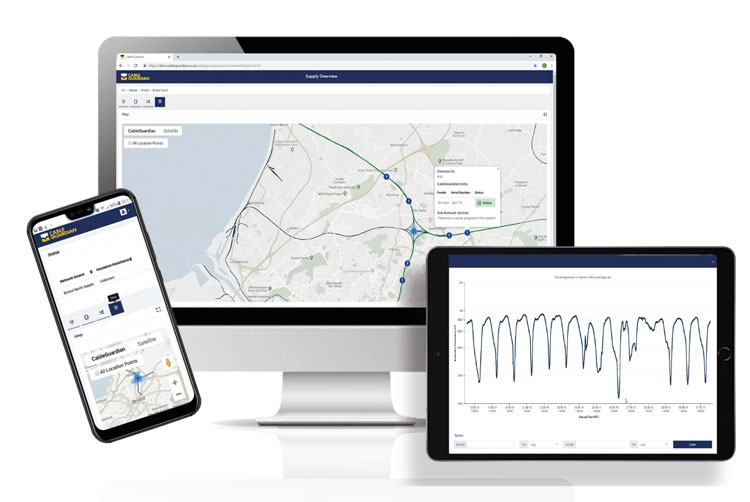

Related topics
Electrification & Cabling, Metal & Cable Theft, Operational Performance, Signalling, Control & Communications




